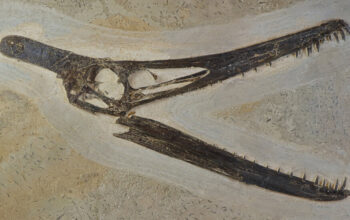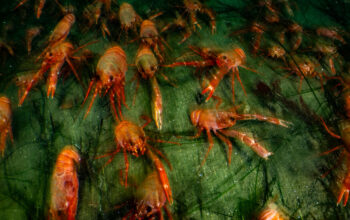
Some 375 million years ago, armored fishes ruled a watery world. Known as placoderms, these primitive jawed vertebrates came in all shapes and sizes, from small bottom-dwellers to giant filter-feeders. Some, like the wrecking-ball-shaped Dunkleosteus, were among the ocean’s earliest apex predators.
Few of these ancient oddities were weirder than the aptly named Alienacanthus. Discovered in Poland in 1957, this Devonian Period fish was initially known for a set of large, bony spines. But the recent discovery of a fossilized Alienacanthus skull, described in a paper published Wednesday in the journal Royal Society Open Science, reveals that these spines were actually the fish’s elongated lower jaw. Measuring twice as long as the rest of the fish’s skull, this lower jaw gave Alienacanthus nature’s most extreme underbite, and, perhaps, a stiff lower lip.
“It’s still very alien looking so the name is very fitting,” said Melina Jobbins, a paleontologist who studies placoderms at the University of Zurich and is an author on the paper.
Since its discovery in the 1950s, Alienacanthus is known only from a few fossils discovered in the mountains of central Poland and Morocco. During the Late Devonian Period, these areas were submerged coastlines on opposite ends of a vast sea separating northern and southern supercontinents. But many of these fossils are fragmentary and offer little detail on what this strange fish looked like.
Over the past two decades, researchers have uncovered additional well-preserved Alienacanthus fossils in European museum collections. Dr. Jobbins teamed up with researchers from several of these museums to pool together the fossil bits and more accurately describe the ancient fish.



